



To find the place where England ends and England can begin?





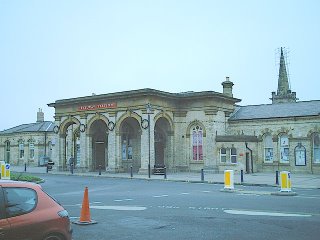





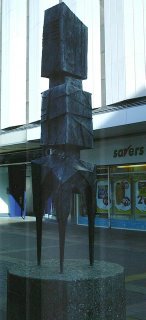

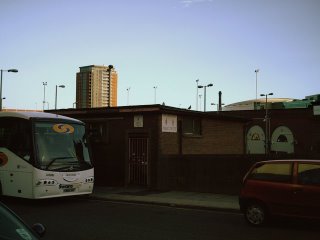
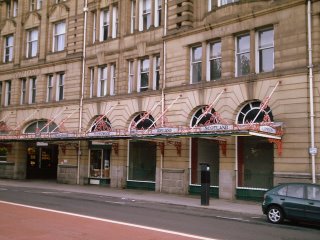
 and walked along to a sports centre and park beside the Ingrebourne. I carried on through the Ingrebourne valley (dull dull dull) past St Georges Hospital which looked nice, and saw another couple who were doing the loop. Engaging them in conversation this was their second outing on the loop having come from Chigwell.
and walked along to a sports centre and park beside the Ingrebourne. I carried on through the Ingrebourne valley (dull dull dull) past St Georges Hospital which looked nice, and saw another couple who were doing the loop. Engaging them in conversation this was their second outing on the loop having come from Chigwell. 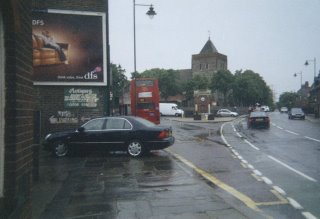





I suppose it had to come really. I had to leave Hertfordshire and enter Essex. There were some pleasant spots on this walk and the weather couldn’t be bettered, but Essex is always a bit of a come down.
The day began at Turkey Street station (see Quin Parker’s amusing entry on Turkey Street in his zone 6 guide) and continues following the Turkey Brook where I walked last time. Coming to a major road I had to stop off to look at Unity superstore, one of the North London Branches which was a very fine store. I bought my lunch and one or two other things then continued with the walk walking down some dull suburban streets and through a dull suburban park. It seems that the council here do not provide seats in the parks so be warned if you’re going and take your own. Enfield Lock on the River Lea Navigation was pleasant with the lock keeper’s cottage dating from 1879 and the cruciform Lee Conservancy offices from 1907. I walked very briefly by the Lee Navigation to Swan and Pike Pool where there was a loop information board. Then it was time to walk by the fast flowing River Lee. The river is deep in places and shallow in others and I saw some fish in it. I crossed a modern steel bridge over a flood relief channel into the County of Essex and came to the Sewardstone Marshes Nature reserve. I nearly stopped for lunch here but decided to press on to follow the route to a farm with a big old farm house from the eighteenth century I would suppose. This looked quite attractive but it was surrounded by a high wall so a picture was just about impossible. The path ran through the fields up to the Sewardstone hills. These hills are wooded with some very attractive views over the Lee Valley Reservoirs, which supply around a quarter of London’s water. I stopped for my lunch overlooking the reservoir and then pressed on to Carroll’s Farm which is a charming traditional weatherboarded Essex farm. I also walked along the road and came upon half a cast iron hat coat and umbrella stand. How this came to be beside a road I don’t know but I took a picture of it anyway.
The path took me through the Scout Association National Headquarters at Gilwell Park and through some pretty meadows where I got lost but not unpleasantly. It would have been good for sunbathing but I pressed on to rejoin the loop into the Chingford part of Epping Forest. Some boys (of all ages) were playing with bows and arrows on the footpath, which I thought was a bit dangerous. Epping Forest has been owned by the Corporation of London for many years and preserves a piece of old England for public recreation forever. There is also Queen Elizabeth’s Hunting Lodge which has been restored by the Corporation.
It was originally built as a Grand Standynge to allow spectators to watch the stag hunt – the original Grandstand. The great staircase in the lodge is round a square newel to allow stately processions to climb the stairs. It is said that Queen Elizabeth rode her horse up the stairs – who knows. The lodge had a display of Tudor food and heraldic banners and is quite well interpreted although the idea of keeping servants and others separate did not begin until regency days when corridors first appear.
People were having fun in the forest in all kinds of ways but I soon left them behind to cross the River Ching (into Essex again) and came to the village of Buckhurst Hill (very posh with lots of large houses. I then went through a little green lane down to the Central Line and passed into one of the council estates erected for Londoners in the Roding Valley. It is very council estate-ish here. There is a large recreation ground with a lake excavated to provide gravel for the M11 motorway nearby. I walked round the lake and crossed the River Roding by a bridge then walked round a large recreation centre and school, named after a guru. I wouldn’t like to go to a school named after a guru! I crossed the motorway and came into Chigwell amongst the bandits and bank robbers. I caught the train home from there.
 This section is a part of the Loop that manages to miss out almost all of the worthwhile sights as it meanders along the Turkey Brook.
This section is a part of the Loop that manages to miss out almost all of the worthwhile sights as it meanders along the Turkey Brook. The path came out at a road called the Ridgeway and there I broke to search for lunch – it seemed quite a long search to a shop but I found one.
The path came out at a road called the Ridgeway and there I broke to search for lunch – it seemed quite a long search to a shop but I found one.



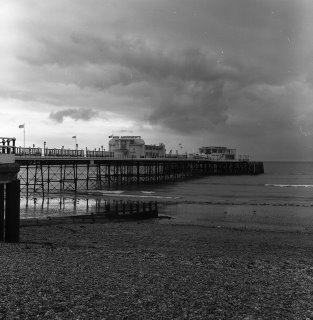 I visited Worthing more to see where it was than anything else and to walk along its art deco pier. The front resembles very closely the picture in my 1937 guide book, however the lido (no swimming pool) and the seafront gardens seemed to emanate decayed decay. The views from the front are of the distant seven sister cliffs and Brighton which appeared bathed in sunlight when I called.
I visited Worthing more to see where it was than anything else and to walk along its art deco pier. The front resembles very closely the picture in my 1937 guide book, however the lido (no swimming pool) and the seafront gardens seemed to emanate decayed decay. The views from the front are of the distant seven sister cliffs and Brighton which appeared bathed in sunlight when I called. 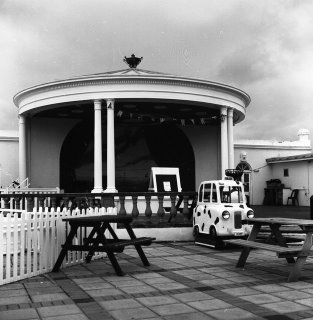

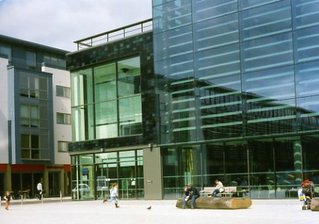 What more can I say about Brighton? I visited some places this time that I hadn’t visited before, mostly on the west side of Dyke Road, my attentions are usually confined to the east. I saw St Michael and All Angels Church, which is really two churches, the new nave and aisle having been added as an extension to the former nave and two aisles. I did rather better for Kings England Books here as a bookshop had a stock of them at reasonable prices. It just goes to show that you don’t need to go to a book town.
What more can I say about Brighton? I visited some places this time that I hadn’t visited before, mostly on the west side of Dyke Road, my attentions are usually confined to the east. I saw St Michael and All Angels Church, which is really two churches, the new nave and aisle having been added as an extension to the former nave and two aisles. I did rather better for Kings England Books here as a bookshop had a stock of them at reasonable prices. It just goes to show that you don’t need to go to a book town.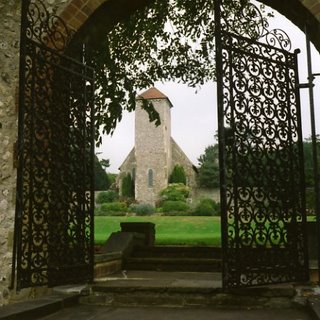





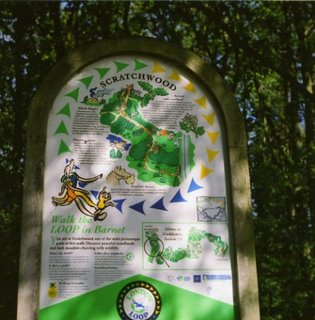

 This one would put the others I say to shame. If people today think they are rich living in a house on a street think how wealthy Gilbert must have been as a highly successful dramatist. Followers of Gilbert and Sullivan will note the use of the word ‘dramatist’, which is how Gilbert referred to himself absolutely detesting the word playwright which he used to describe Shakespeare, another pet hate (and mine too). Norman Shaw designed Grim’s Dyke in 1872 in the popular Tudor style. Gilbert moved in in 1890 after his success with possibly during the run of the Gondoliers. He changed the name from Graeme’s dyke. There is lots of ref brick, stone mullions and half timbered gables. The route sadly passed by the lake in the grounds where Gilbert drowned in 1911 while assisting a young girl visitor during a swimming lesson. The lake is just about dry now and there are some rotting remains of a summer house. There is a plaque on the lake to commemorate Gilbert and there is a blue plaque on the house itself.
This one would put the others I say to shame. If people today think they are rich living in a house on a street think how wealthy Gilbert must have been as a highly successful dramatist. Followers of Gilbert and Sullivan will note the use of the word ‘dramatist’, which is how Gilbert referred to himself absolutely detesting the word playwright which he used to describe Shakespeare, another pet hate (and mine too). Norman Shaw designed Grim’s Dyke in 1872 in the popular Tudor style. Gilbert moved in in 1890 after his success with possibly during the run of the Gondoliers. He changed the name from Graeme’s dyke. There is lots of ref brick, stone mullions and half timbered gables. The route sadly passed by the lake in the grounds where Gilbert drowned in 1911 while assisting a young girl visitor during a swimming lesson. The lake is just about dry now and there are some rotting remains of a summer house. There is a plaque on the lake to commemorate Gilbert and there is a blue plaque on the house itself.









